Noise Limits by City: Hosting Events Without Breaking the Law in 2025
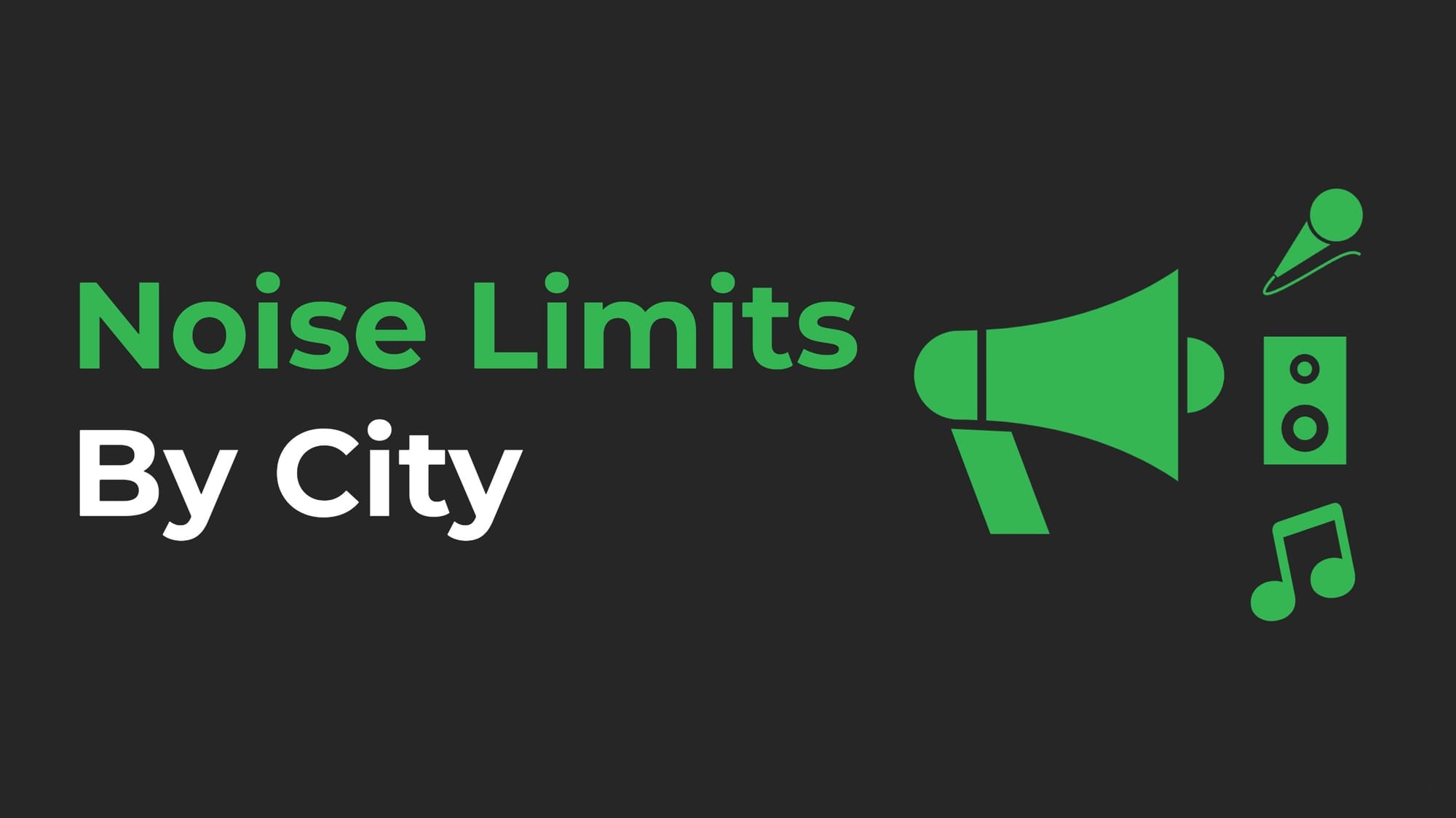
Planning a birthday brunch, baby shower, BBQ, or just a fun hangout at home? Whether it’s a cozy get-together or a bigger event like a block party or live music night, there’s more to think about than just food and guest lists—exceeding permitted sound levels or running past quiet hours can lead to fines, permit complications, or even a forced shutdown.
This guide will take you through how cities across the United States regulate event-related noise and enforce curfews, equipping event planners, venue managers, and private hosts with the information they need to stay compliant. From maximum decibel levels and quiet hour windows to permit rules and penalty structures, we break down the essential regulations that determine how, when, and where events can safely make noise without crossing the line.
How We Did It
To create this article, Giggster conducted an in-depth analysis of local noise regulations across major U.S. cities, focusing on key variables that directly impact event planning and venue operations.
The research examined five main criteria:
- Maximum Decibel Levels in Entertainment Districts (e.g., nightlife zones, commercial corridors)
- Maximum Decibel Limits in Residential Zones – Daytime Thresholds – Nighttime Thresholds
- Quiet Hour Schedules (Start/end times for noise restrictions during weekdays)
- Fines for Noise Violations (First-time and repeat offense penalties)
- Permit Requirements for Exceeding Sound Limits (When and where noise permits are required)
Data was sourced primarily from official municipal Code of Ordinances available through third-party legal code libraries such as Municode Library, American Legal Publishing, and eCode360. This structured approach allowed us to identify patterns, outliers, and city-specific nuances to provide planners and hosts with practical, actionable insights.
Important Considerations
While this analysis is grounded in official municipal codes and legal ordinance libraries, it's essential to recognize that local noise regulations are often nuanced and context-specific. Sound limits may vary based on zoning classifications, such as residential, commercial, or entertainment districts, and can also depend on factors like proximity to the property line or the type of venue involved.
Additionally, permissible noise levels for public events are frequently influenced by the event’s location, timing, and nature. Certain districts or venue types may be subject to unique guidelines that are not reflected in general citywide codes. For the most accurate and up-to-date information, always consult your local government office or review the specific ordinances relevant to your event.
Core Variables That Shape Noise Regulation
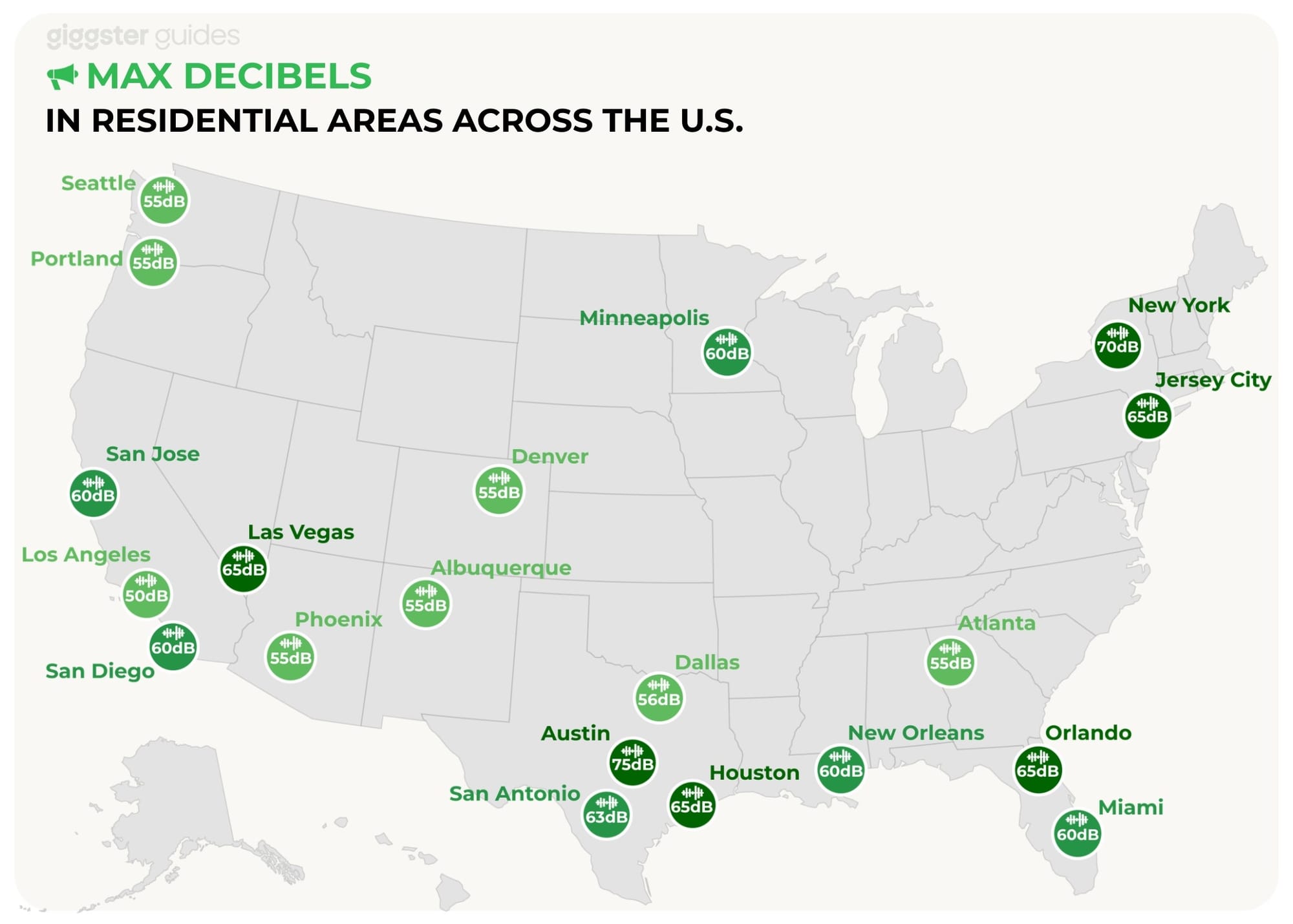
Whether it’s a street fair in Austin, a rooftop dinner in New York, or a beachside wedding in Santa Monica, sound brings energy to events—but it can also spark tension when it drifts into residential zones. Each U.S. city has its own rules for managing this balance, with noise ordinances designed to protect community peace while still allowing for celebration. For event planners, understanding these local sound laws is essential, not just for compliance but to balance vibrant cultural and social experiences with the right of residents to a peaceful environment.
What Are Noise Ordinances?
Noise ordinances are local laws that set maximum sound levels based on zoning—residential, commercial, or industrial—and typically include quiet hours, usually starting around 10:00 p.m. While the intent is consistent, the specifics vary widely.
Three core factors shape how sound regulations are applied:
- Time of Day
- Zoning
- Event Type
Before diving into how time of day and event type influence noise limits, it's helpful to understand just how much residential regulations vary from city to city. While entertainment districts may be more lenient, residential areas tend to enforce much lower sound thresholds, and some cities are stricter than others.
With that in mind, let’s explore how cities manage residential noise during different times of day—and what that means for event planning.
Residential Sound Limits for Daytime Events
In most U.S. cities, residential zones come with stricter daytime noise regulations than commercial or entertainment areas. The goal is to maintain peace and quiet in neighborhoods, especially during work-from-home hours or weekends.
Typically, daytime sound in residential areas is limited to 55–65 decibels (dB)—about the volume of normal conversation or mellow background music, measured at the property line. That means even a cheerful crowd or light speaker setup can get close to the limit faster than you'd expect.
Even for private events at home, most cities still expect hosts to follow residential noise limits. So whether you're playing music, using a mic for toasts, or just entertaining a larger group, it’s important to stay within the legal noise range. And since most cities don’t offer special noise permits for residences, it’s up to you as the host to plan accordingly.
Cities Where It’s Easier to Host at Home
That said, not all cities are equally strict. Some offer a little more flexibility, especially if your event is short, happens during standard hours (like 10:00 a.m. to 9:00 p.m.), and doesn’t result in noise complaints.
Austin, New York City, and Boston are especially popular for backyard parties and home events thanks to higher allowable daytime decibel levels. That gives you a bit more breathing room for things like acoustic music, games, or light speaker playlists, without immediately worrying about a citation.
Take a look at how these cities compare in terms of maximum allowed daytime noise levels in residential areas:
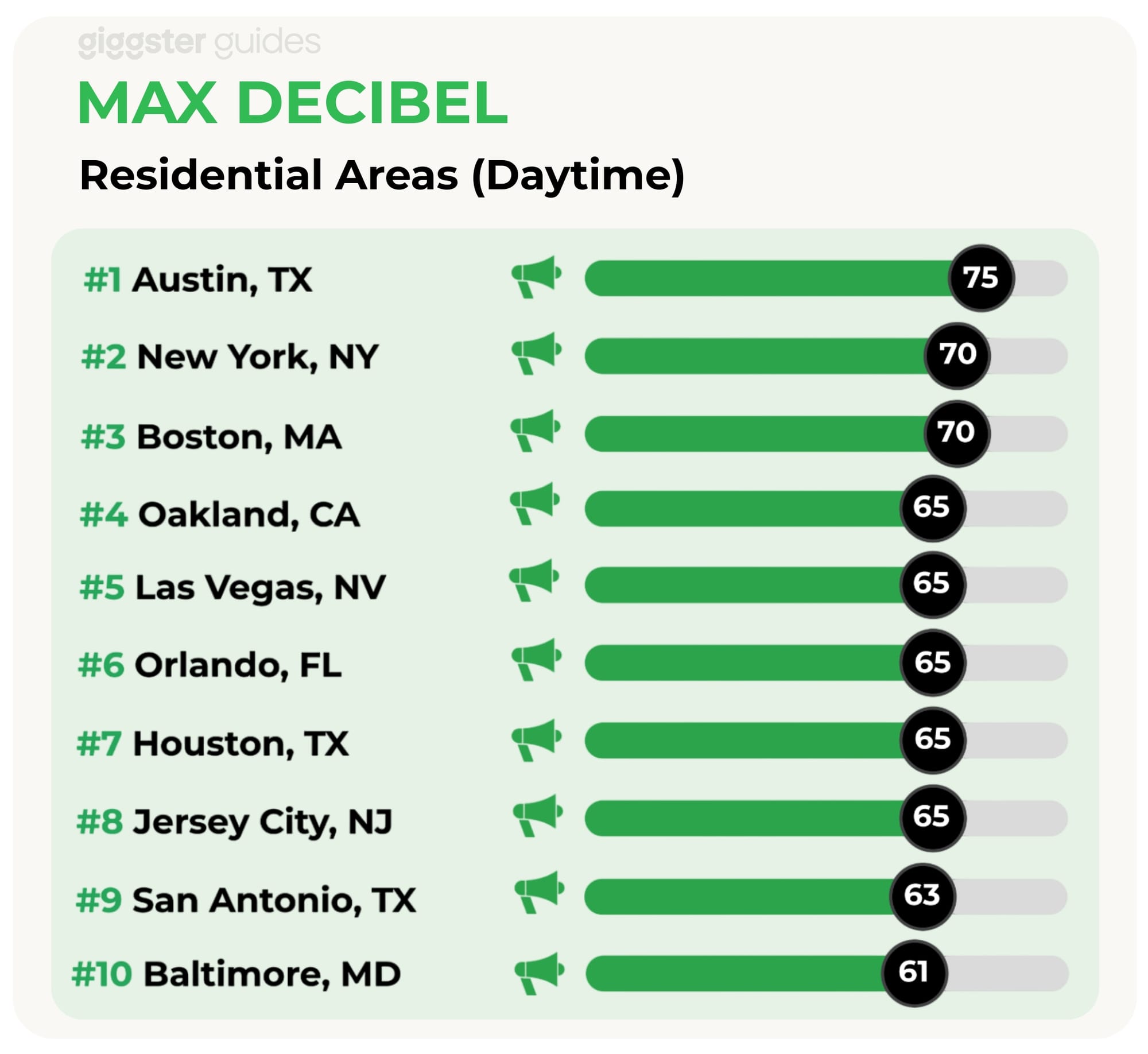
Cities With the Most Restrictive Limits
On the flip side, some cities like San Francisco, Albuquerque, and Seattle enforce stricter daytime noise caps, often topping out at 55 dB. That doesn’t mean no fun allowed—but you’ll want to approach things a bit more thoughtfully.
If you're planning a daytime event in one of these cities, think garden brunches, baby showers, book clubs, or small-group luncheons. Keep music low, skip the DJ, and maybe opt for a curated playlist instead of amplified sound. With a little creativity, even low-volume gatherings can feel just as fun—and a lot less stressful.
Here’s a comparison of the cities with the most restrictive daytime noise limits in residential areas:
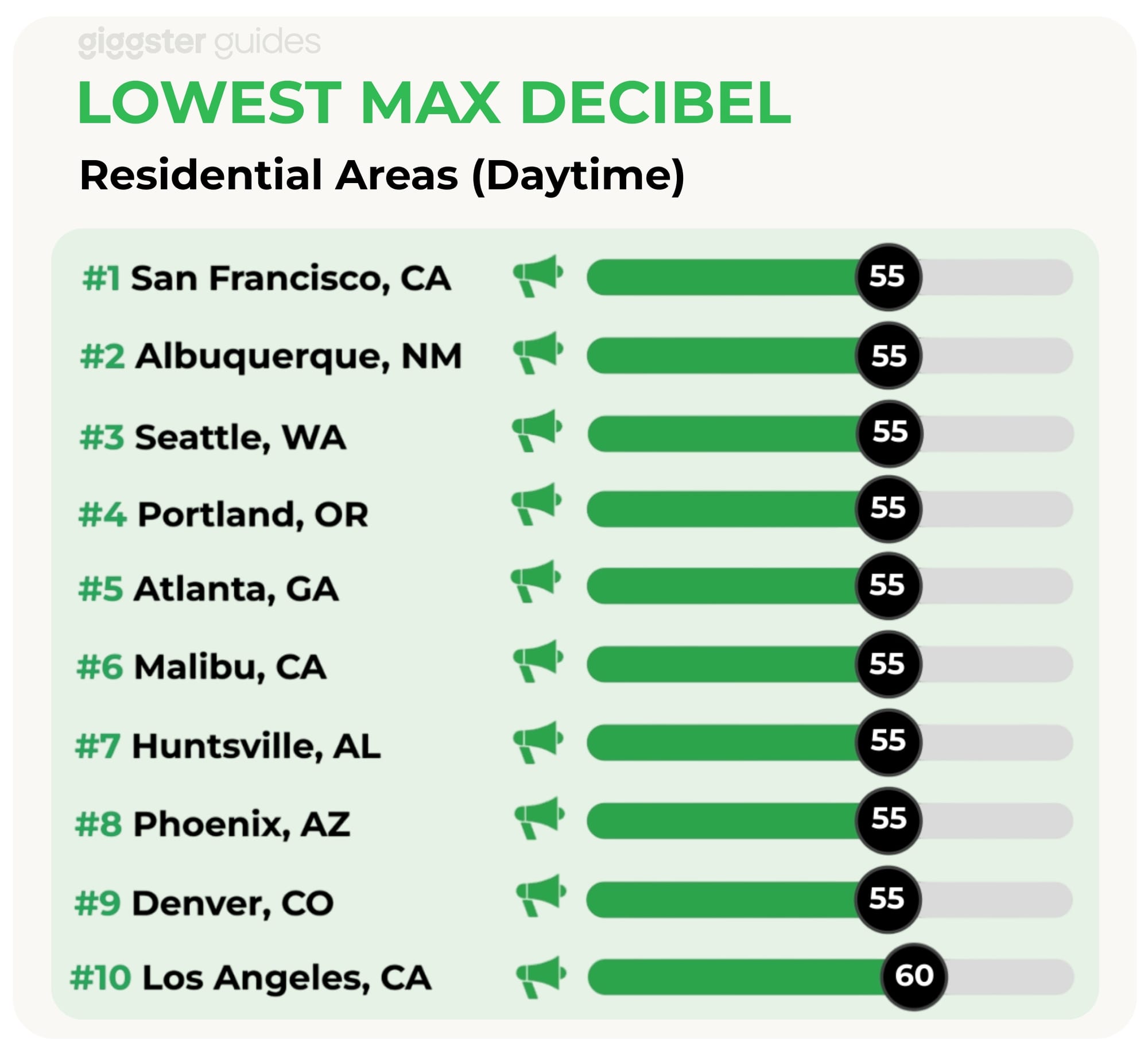
Daytime Sound Tips for Hosting at Home
When hosting a daytime event in a residential area, a few small adjustments can go a long way toward staying within local noise limits and avoiding complaints. These quick, proactive steps help you create a great atmosphere, without crossing the decibel line:
- Keep the speaker volume moderate, especially if guests are outdoors
- Position sound equipment away from fences and windows
- Use a decibel meter or smartphone app to monitor sound levels near the property line
- Notify neighbors ahead of time, especially if you expect music or a larger group
- Wrap up amplified sound before quiet hours begin
Nighttime Noise Limits: Planning After Dark
Most municipalities define quiet hours from around 10:00 p.m. to 7:00 a.m., during which the maximum permissible noise level in residential areas typically drops by 5–10 decibels. That brings nighttime noise caps down to 45–55 dB—about the sound of soft conversation or mellow background music. These rules are in place to protect sleep, reduce stress, and maintain public peace, especially in high-density neighborhoods where noise travels fast.
Here's a quick look at the maximum noise levels allowed in residential areas at night across different U.S. cities:
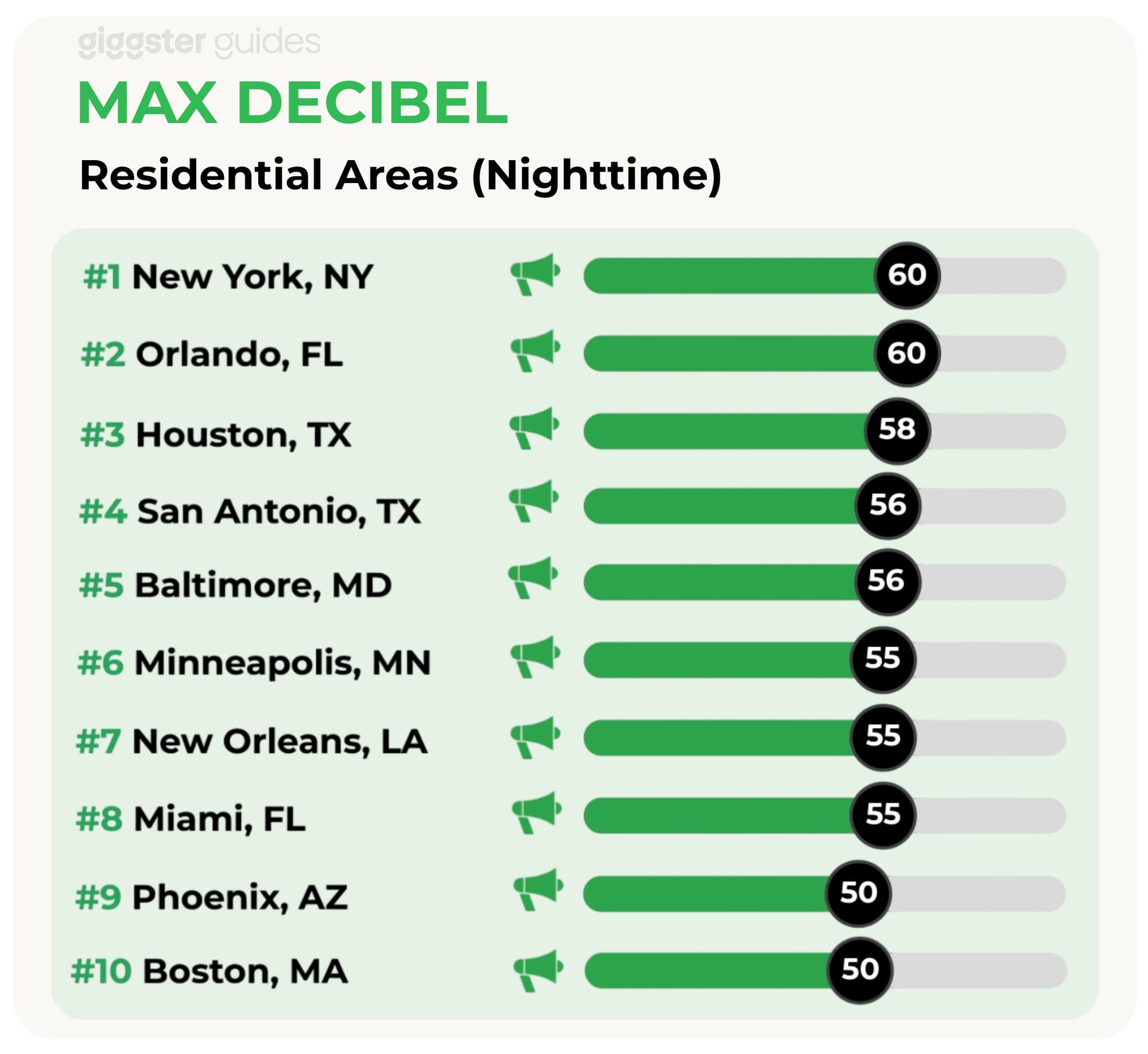
Cities With the Strictest Nighttime Noise Caps
Unlike previous ones, some cities take quiet hours especially seriously, with noise limits so low that even light music could be pushing it. This doesn’t mean the party’s over—it just means thinking creatively about how to keep the energy going without violating local laws.
To see how different cities handle nighttime noise limits, here’s a breakdown of the cities with the strictest nighttime residential noise rules:

What It Means for Nighttime Hosts
That doesn’t mean the party’s over—it might just be time to move things inside or switch to a more relaxed vibe. Think cozy dinner parties, wine nights, or game nights in sound-insulated spaces. Want to keep music going? Consider silent disco headphones, acoustic sets, or low-volume playlists inside.
And of course, the basics still apply:
- End outdoor amplified sound before quiet hours
- Monitor volume with a decibel app or meter
- Give neighbors a heads-up if you're running past standard hours
But what if your event isn’t in a quiet neighborhood, but in a bustling nightlife district or downtown venue area? That’s where entertainment zone rules come in.
When the Rules Shift Outside Residential Zones: Commercial & Entertainment Areas
For outdoor public events, such as festivals, parades, and concerts held in entertainment districts, municipal noise ordinances typically allow for higher decibel levels to reflect the area's social and commercial activity. These limits often range between 70 to 85 dB, depending on the time of day and the proximity to residential areas. For instance, an afternoon concert in a commercial zone may legally reach 80 dB, while that same event in a residential neighborhood could be restricted to 70 dB or less. After 10:00 p.m., even entertainment zones typically require a 5 to 10 dB reduction to comply with quiet hour policies.
Curious how your city stacks up? Check out the map of maximum allowed decibel levels in entertainment zones across the U.S.:
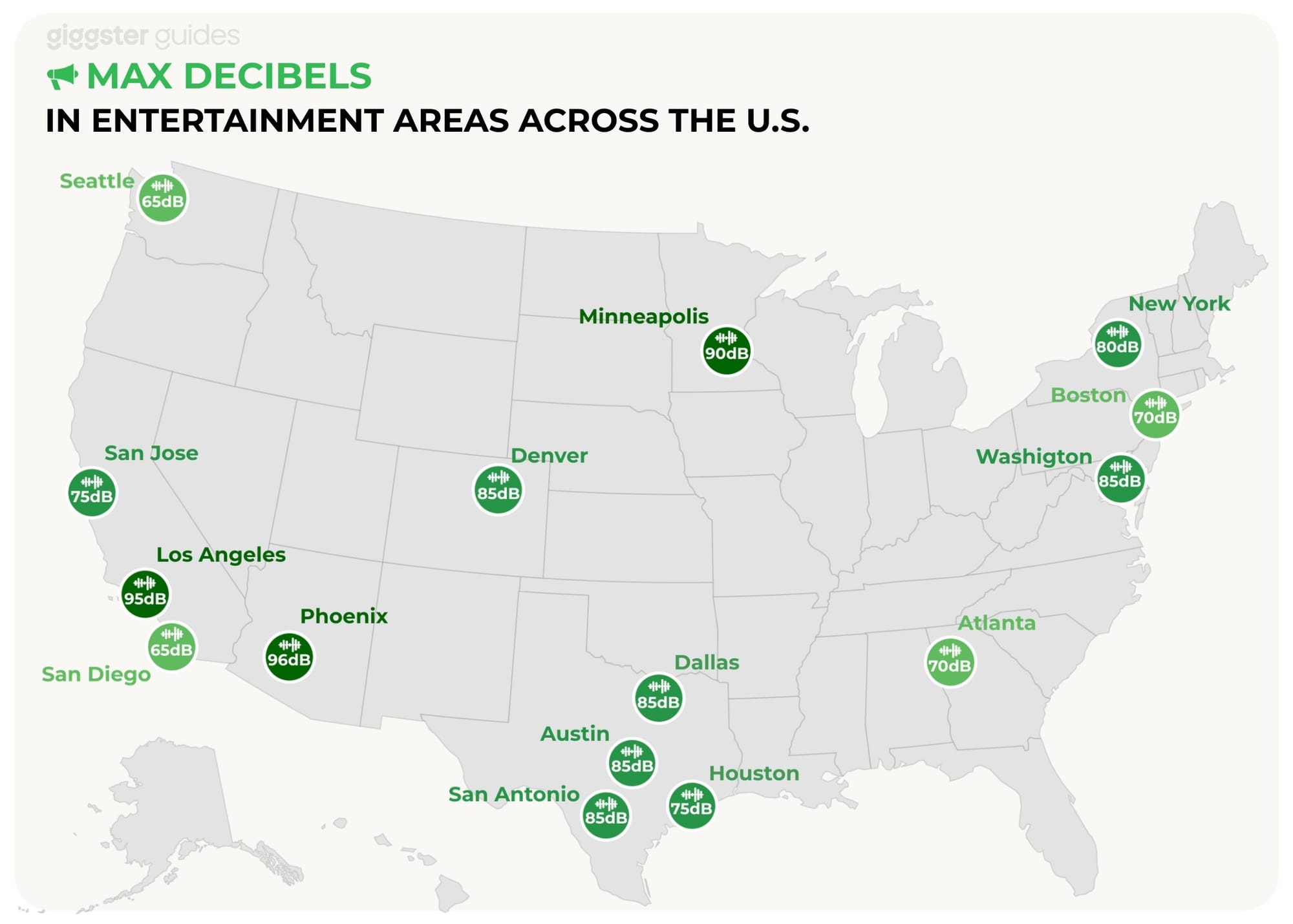
Entertainment and mixed-use areas are designed to support nightlife, dining, and cultural activity, so cities often permit higher noise thresholds and extended hours. However, this doesn’t mean anything goes. Municipalities still impose caps, especially in areas near residential buildings.
Cities across the U.S. are constantly working to balance nightlife vibrancy with neighborhood peace.
For example:
- Chicago permits bars and venues to exceed standard limits, as long as they stay below 80 dB(A) at 100 feet or no more than 10 dB above ambient levels.
- San Antonio recently paused its plan to revise its noise ordinance, instead investing $150,000 in a grant program to help businesses manage noise and reduce complaints.
These cases show how cities tailor their policies to reflect local character and community feedback, offering valuable lessons for anyone planning events in high-traffic or nightlife-heavy districts.
Permits, Exceptions & Party Rules
In many U.S. cities, a noise permit is required when an event is expected to exceed the standard allowable decibel levels, especially in residential and mixed-use zones. The typical threshold for triggering a permit ranges from 65 to 75 dB, measured either at the property line or from a set distance around the noise source. In most cities, permits come from local agencies like Public Works or Parks & Rec, depending on where and what type of event you’re planning.
The nature and scale of the event play a major role in determining whether a permit—or even multiple permits—are required. Events involving amplified sound, large crowds, or public spaces are the most common candidates for regulation.
Examples include:
- Live music or DJ sets in public parks or outdoor venues
- Parades and street festivals involving sound systems or road closures
- Private events at commercial venues that exceed zoning sound limits
- Public protests or rallies using megaphones or loudspeakers
Even when held in permitted venues, events that go beyond zoning allowances may require an additional sound permit or temporary noise variance.
Temporary Exceptions and Special Event Policies
Many cities offer exceptions to their standard noise rules through special permits or variances, particularly for large-scale, one-time public events like marathons, cultural celebrations, or city-sponsored festivals. These exceptions allow organizers to exceed normal decibel limits during clearly defined hours and under specific conditions.
Real-world examples:
- New Orleans allows higher decibel levels during Mardi Gras parades, provided organizers apply in advance and follow time-based restrictions.
- Austin extends sound allowances in its entertainment district for events like South by Southwest.
- San Francisco offers temporary noise permits for select venues, but only during pre-approved hours with limits on amplification.
Violation Penalties: Fines and Consequences for Exceeding Legal Limits
Nobody wants their event interrupted. Going over sound limits without a permit could mean fines or even having to shut things down early—something no host wants. Most U.S. cities have clearly outlined enforcement procedures in their municipal codes, and violations are typically handled by local law enforcement, city inspectors, or noise control officers.
In many cases, enforcement starts with a warning or notice of violation, especially for first-time offenders. But if the noise continues or the offense is repeated, the response can escalate quickly into formal penalties or legal action.
Typical Fine Structures
Fines vary widely based on the city, the location of the event (residential vs. commercial), and whether it’s a first offense or a repeat violation. Some cities also issue stricter penalties for unpermitted amplified sound during quiet hours.
Here are examples of common penalties in major cities:
- Los Angeles, CA – Up to $400 per offense, with higher fines for amplified music without a permit
- Chicago, IL – $300 to $1,000 for first-time violations; higher during quiet hours
- New York City, NY – Ranges from $350 to $3,000 depending on zoning and time of day
- Miami, FL – Starts at $250 for a first violation, with increased fines for repeat offenses
- Washington, D.C. – $100 to $1,000 depending on the noise type and compliance history
See which U.S. cities impose the most severe fines for noise violations, especially during quiet hours or at unpermitted events:
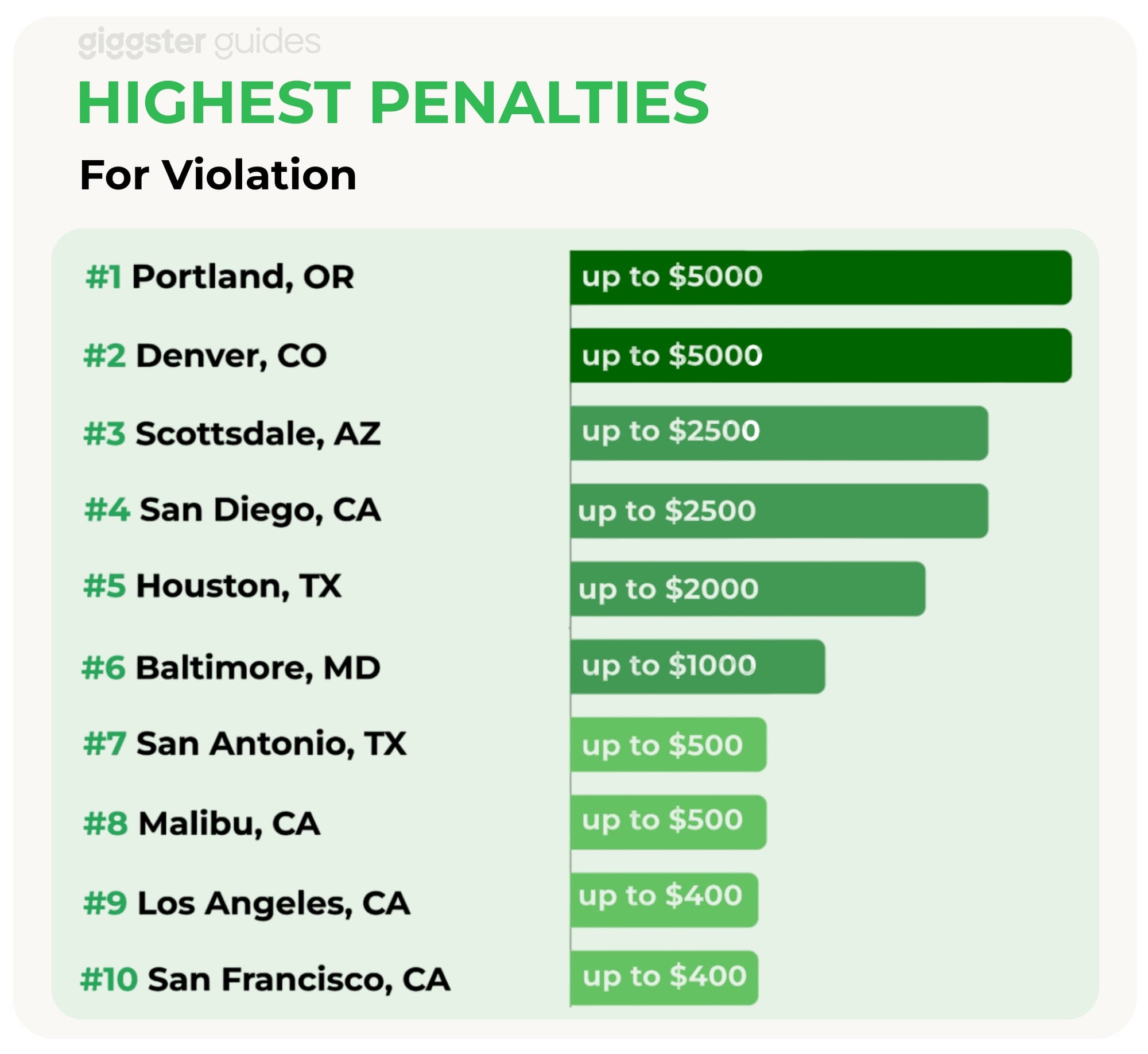
Escalating Penalties for Repeat Offenses
Many cities enforce progressive penalties for multiple violations. After a first warning or citation, the fines often increase significantly with each subsequent offense:
- Second Offense: Usually results in a higher fine and a formal citation.
- Third or Subsequent Offenses: May involve maximum fines allowed under the city code, potential misdemeanor charges, and mandatory appearance before a hearing officer.
- In some cities, repeat offenders may also face permit revocation, denial of future event permits, or stricter noise restrictions on their property or venue
Bringing It All Together
Let’s face it—noise rules probably aren’t the first thing you think about when planning a party or event. But they matter more than you’d think. What’s totally fine in one neighborhood might lead to complaints (or fines) just a few blocks over. Whether you’re planning a backyard brunch or a full-blown street festival, knowing your local sound laws helps you avoid surprises like permit issues or unexpected shutdowns.
The good news? A little prep goes a long way. Stay informed, apply for any needed permits, keep an eye on volume, and give your neighbors a heads-up.
Once you’re confident in the local sound laws, you can explore the wide range of venues available on the Giggster database that offers thousands of unique spaces for both high-energy events and quieter gatherings alike!

